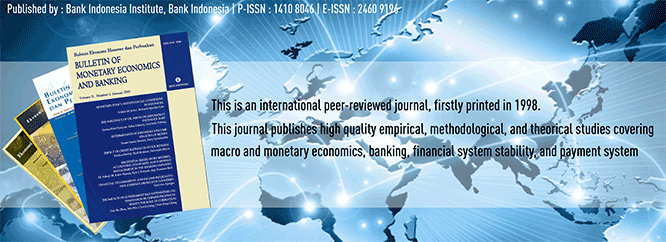
Document Type
Article
Abstract
Few large banks dominate the Indonesia banking industri. Furthermore, in the past ten years, there were a series of mergers and acquisitions in the banking market. The facts cause implications on competition. In this paper, we examine these issues exploiting an unconsolidated annual financial report of all commercial banks between 2001 and 2009. The Panzar-Rose method is employed to examine the banks behavior in competition. Estimates indicate that banks in all three subsamples, large; medium-sized and small are working in a monopolistically competitive market. The analysis of market concentration supports the conventional view that concentration impairs competition. The study shows that the most competitive market was the medium-sized banks because it was least concentrated. In contrast, the large market was more concentrated thus it was less competitive. The consolidation policies driven by the Central Bank reduced market concentration because mergers and acquisitions were mostly conducted by the mediumsized and small banks. Further the improvement of market share distribution and the increasing capacity of the merging banks enhanced competition in the Indonesia banking industry.
Recommended Citation
Mulyaningsih, Tri and Daly, Anne
(2011)
"COMPETITIVE CONDITIONS IN BANKING INDUSTRY: AN EMPIRICAL ANALYSIS OF THE CONSOLIDATION, COMPETITION AND CONCENTRATION IN THE INDONESIA BANKING INDUSTRY BETWEEN 2001 AND 2009,"
Bulletin of Monetary Economics and Banking: Vol. 14:
No.
2, Article 7.
DOI: https://doi.org/10.21098/bemp.v14i2.83
Available at:
https://bulletin.bmeb-bi.org/bmeb/vol14/iss2/7
First Page
141
Last Page
175
Creative Commons License

This work is licensed under a Creative Commons Attribution-NonCommercial 4.0 International License
Country
Australia
Affiliation
University of Canberra







